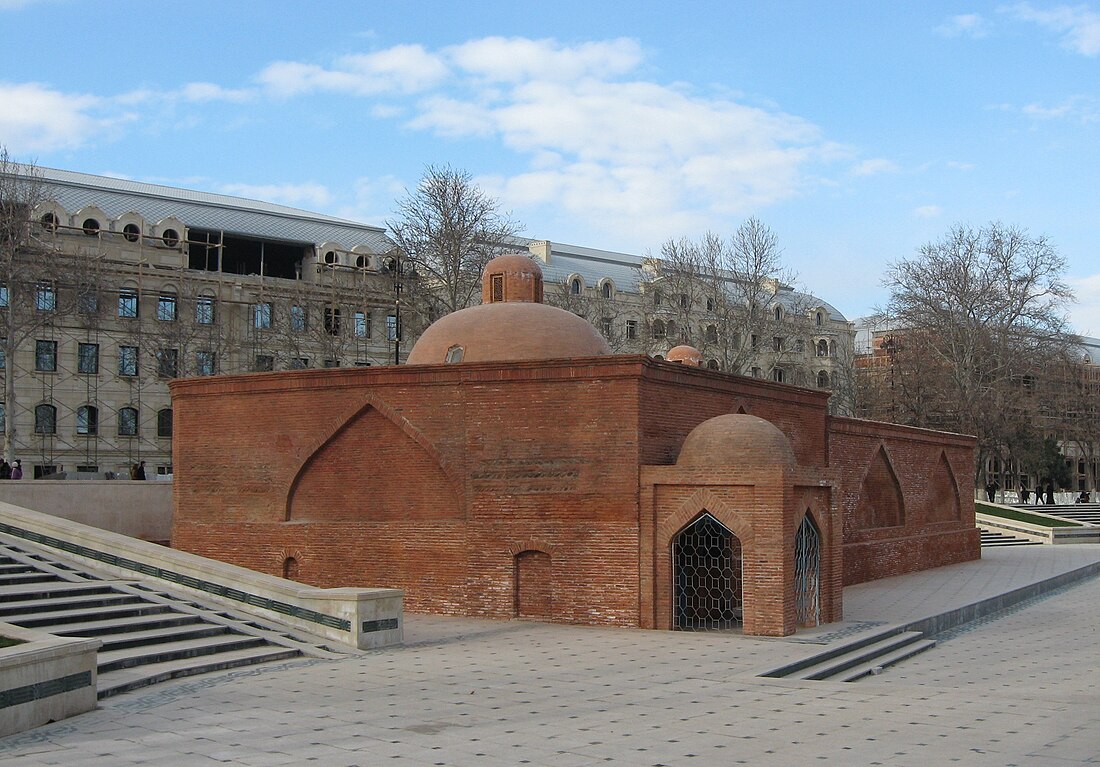Top Qs
Timeline
Chat
Perspective
Chokak Hamam
Historical bath in Ganja, Azerbaijan From Wikipedia, the free encyclopedia
Remove ads
Chokak Hamam (Azerbaijani: Çökək hamam, "fallen bath") is a historical bath near Juma Mosque in Ganja.[1] Historical-architectural monument built in 1606, by order of Shah Abbas.
The bathhouse was included in the list of immovable historical and cultural monuments of local significance by the decision No. 132 of the Cabinet of Ministers of the Republic of Azerbaijan on August 2, 2001.
Remove ads
Naming
The Chokak hamam is known by various names among the city's population. Since it was built by the order of Shah Abbas I, it is sometimes called the "Shah Abbas hamam."[2] Due to its proximity to the Shah Abbas Mosque, it is also referred to as the "Mosque Bathhouse," and later it became known as the "Haji Alakbar Bathhouse" after the person who operated it.[3] The name "Chokak " (meaning "sunken") comes from the fact that the bathhouse was built in a sunken area to ensure water pressure.[3][4]
Remove ads
History
After the completion of the Juma Mosque in 1606, by the order of Safavid ruler Shah Abbas I, the construction of the Chokak Bathhouse began nearby.[5] The architect of the bathhouse was Sheikh Bahaeddin, who was also the architect of many monuments in Ganja.[4][6]
Architecture
In the construction of the bathhouse, traditional materials of the time were used, such as red bricks, egg whites, clay, and a lime-based binding mixture. The bathhouse consists of two interconnected halls. Inside the larger hall, there is a pool and a fountain, while the smaller hall is designated for washing. The bathhouse has two large domes and five smaller domes.[7] Semi-domes, which serve as ventilation, were built around the large domes. The bathhouse remains warm in the winter and cool in the summer.[8] In the basement, there were two steam boilers heated by wood.[9] Steam was distributed to the halls through ceramic pipes embedded in the walls and floors, ensuring even heat circulation throughout all the rooms.[6] This system remained in use until 1963.[3]
After Azerbaijan regained its independence, in 1996, artist Galib Baghirov established a Decorative Applied Arts Center within the bathhouse, where he created and exhibited ceramic pottery.[10] The bathhouse was included in the list of immovable historical and cultural monuments of local significance by the decision No. 132 of the Cabinet of Ministers of the Republic of Azerbaijan on August 2, 2001.[11]
Restoration
The monument was restored in 2013,[12] with efforts made to preserve its historical authenticity. The restoration work was carried out using old bricks, and the damaged dome and roof were repaired.[13] After the restoration, the bathhouse became operational again.[14] However, its use by a hotel and the fact that access to the bathhouse is only available through the hotel has been met with public disapproval.[15][16][17]
Remove ads
Gallery
- Chokak Bath and Javad khan's tomb
See also
References
Wikiwand - on
Seamless Wikipedia browsing. On steroids.
Remove ads






